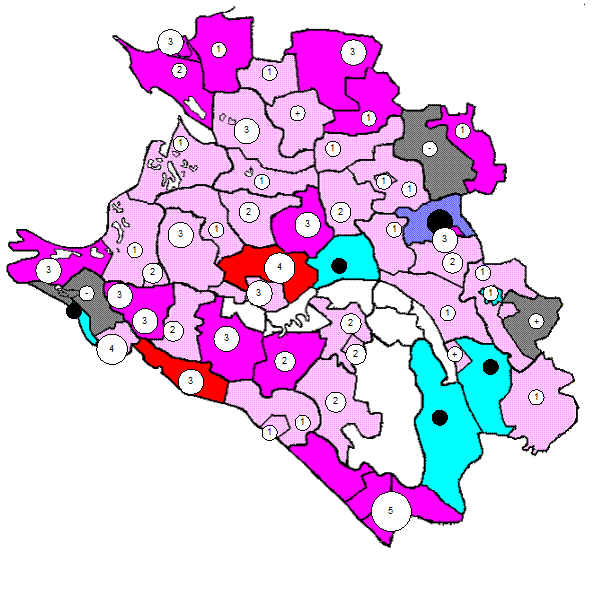Strong declension
Degrees of comparison The so-called qualitative adjectives were inflected for the degrees of comparison. The ending of the comparative degree was usually –ra, of the superlative –ost. E.g. heard (hard) – heardra (harder) – heardost (hardest) A few adjectives had comp. and super. forms from a different root. od (good) – betera (better) – betst (best) 6. THE ADVERB Gradually a great number of adverbs in –lice were formed, and –lice was regarded as an ad-verbial suffix which could be used beside or instead of –e. E.g. hearde and heardlice. Later –lice developed into –ly. 7. THE ARTICLES There is no separate definite article in OE: se means both ‘the’ and ‘that’ while pes means ‘this’. There is no indefinite article, e.g. Leo cyste guman ‘A lioness kissed a man’. But you can see it beginning to develop in examples like an wulf wearp asend ‘one wolf/a wolf was sent’ and on anre bec ‘in one book/a book’. 8. THE VERB Though the system of the verb in the OG languages was much simpler than in Latin, Greek or Sanskrit, it was more complicated than that of any other part of speech. The OE verb had the categories of mood, tense, number, person and rudiments of aspect, voice and order (opposition of perfect – non-perfect). Besides, the verb was divided in two great classes, the weak and the strong. There were three moods in OE, the indicative, the subjunctive and the imperative. The subjunctive was used much more extensively than in MnE. The category of number was much more developed than in MnE. Number was distinguished not only in the indicative, but in the subjunctive and the imperative as well. There were only two numbers, S and Pl. The OE verb had already no dual endings, so the Pl forms of the verb were also used with the dual forms of the personal pronouns. The three persons were distinguished only in the singular of the indicative mood. E.g. ic write, pu writest, he writep. In the plural there was only one ending for all persons: we (ge, hie) writap. OE verbs distinguished only two tenses by inflection, the present and the past. There was no future tense, a future action being denoted by a present tense form, as in ME I leave tomorrow. The two tenses are found not only in the indicative, but in the subjunctive as well. OE verbs are said to have distinguished two aspects – the perfective (expressed with the help of some prefixes, particularly the prefix ge-) and the imperfective (without prefixes). E.g. the OE don, writan are regarded as corresponding to the Russian imperfective делать, писать whereas OE gedon, gewritan to the Russian perfective сделать, написать. But such correspondence was irregular. Some verbs could express perfectivity without prefixes, many prefixes only changed the lexical meaning of the verbs without necessarily making them perfective. Hence, it is difficult to speak of aspect as a stable category in OE. One may speak of some rudiments of the category of voice in OE. It was by no means a development of the IE and Gt voice systems. Only Gt retained some of the IE passive forms. The opposition of the two participles, the active P I writende (E.writing) and the passive P II writen (E. written) might be regarded as a partial voice opposition, especially in view of the fact that the passive voice of MnE has developed on the basis of participle II. Participle II expressed not only “passivity”, but very often “priority” as well. E.g. He wif haefde, him gegiefen of Francena cyningcynne (E. He had a wife (that had been) given to him from the royal family of the Franks). Thus (ge)giefen (E.given) – giefende (E.giving) might also be regarded as a partial opposition of “priority” - “non-priority”. Or, in other words, an opposition of the category of order, always bearing in mind that the MnE perfect forms have also developed on the basis of participle II.
|




